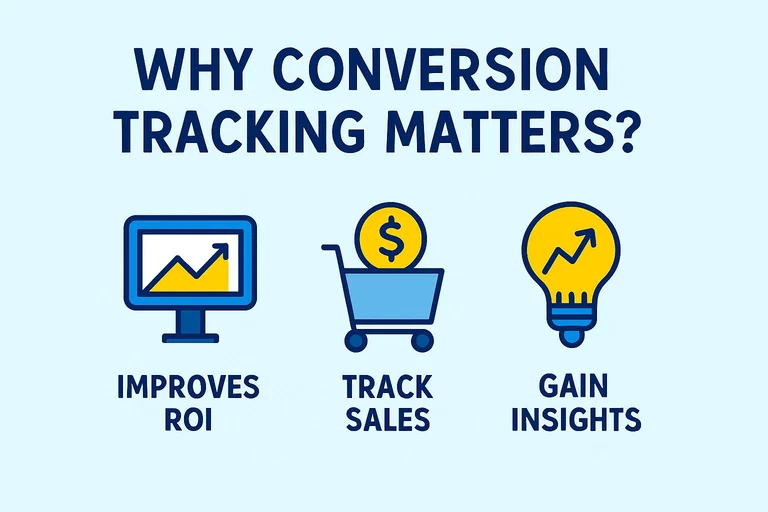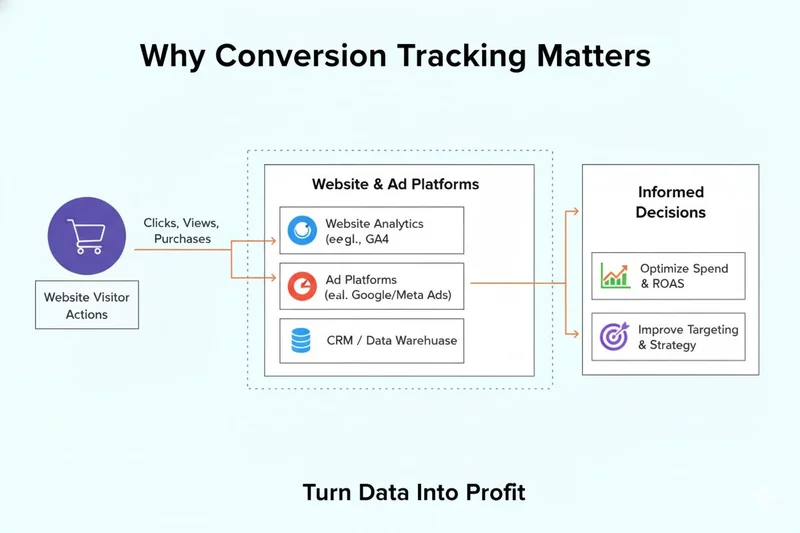
Tracking conversion checklist 2025
Tracking conversion is the first thing to check when your ads or reports do not match reality. If purchase numbers, revenue, or signups look wrong, start by confirming that events are firing where they should and that values are passed through cleanly. A few quick checks will save hours of wasted ad spend and bad decisions.
Why tracking conversion matters
When your tracking is solid you can tell which ad or page brings real revenue. When it is flaky you are guessing. Good tracking helps you stop spending on losing ads, improve landing pages that actually work, and measure the true return from campaigns.

Common tracking problems and what they look like
- No order value attached. Reports show conversions but no revenue.
- Duplicate events. One sale appears more than once and inflates numbers.
- Missing steps. Parts of the funnel are not tracked so conversions seem lower than they are.
- Mismatched names. Different tools call the same action different things and the reports do not line up.
Quick checks you can do now
- Buy flow test. Complete a purchase and confirm the thank-you page fires the event.
- Value check. Compare the order total in your backend with what the ad platform shows.
- Deduplication check. Look for the same order ID multiple times within a short window.
- Naming check. Make sure the event name is the same across analytics and ad platforms.
How to fix common problems, step by step
- Start with a simple event map that lists the key conversions and what each should contain. For ecommerce that usually includes order ID and order total.
- Confirm the conversion tag on the thank-you page sends those fields.
- If you use Google Ads, make sure your Google conversion tags are receiving the value field and that your platform mapping is consistent.
- If you find events blocked by browsers or ad blockers, plan a server side tag for the purchase event so the data reaches your systems reliably.
When to use a server side tag
If you see large gaps between platform reports and backend revenue, or if many users block client-side scripts, a server side tag can reduce lost signals. It takes developer time, but for high-value events it often pays back quickly by improving bidding and attribution.
A short checklist to hand your teammate
- Event map documented and shared.
- One live purchase tested end to end.
- Order ID and value confirmed in platforms.
- Conversion tag on the post-purchase page validated.
- Google conversion tags checked for value mapping.
- Deduplication rule in place.
- Plan for server side tag if client-side signals are unreliable.
What to expect after you fix tracking conversion
Numbers should line up more closely across tools and performance should feel steadier. Bidding strategies will make better decisions and you will be able to measure real return on ad spend. Most teams see fewer surprises in reports and clearer answers about where to spend next.
Benefits of conversion tracking
Effective tracking keeps return on ad spend honest, highlights the channels that nurture profitable customers, and gives teams clear signals on where to test next. Those benefits compound when every tool agrees on the same events and values.
Final thought
Make tracking conversion part of your regular checklist. Do a quick buy flow test every month and keep a short log of fixes so you do not repeat the same errors. If you want, I can turn this into a one-page audit you can run with a teammate in 30 minutes.
Ready to Improve Your Store?
Join the dozens of Shopify brands that have increased their revenue by an average of 247% using our proven process.